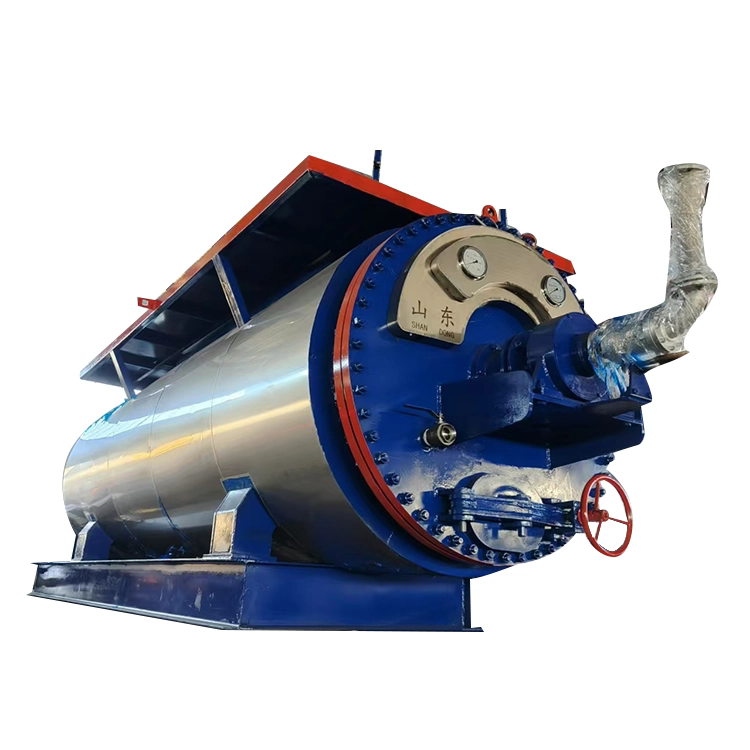How Does Animal Fat Refining Equipment Ensure High-Quality Output?
2025-08-26
In the global edible oil and fat industry, animal fat refining equipment plays a crucial role in transforming raw animal fats into high-quality, safe, and market-ready products. Whether it’s tallow, lard, poultry fat, or other animal-based oils, modern refining technologies help achieve superior purity, extended shelf life, and compliance with strict food and industrial standards. With rising demands from the food processing, cosmetics, pharmaceuticals, and biofuel sectors, investing in the right refining equipment has become a critical decision for manufacturers aiming to stay competitive.
What Is Animal Fat Refining Equipment and Why It Matters
Animal fat refining equipment refers to an integrated system designed to purify crude animal fats by removing unwanted impurities, free fatty acids (FFA), moisture, and odor. Crude fats obtained from slaughterhouses or rendering plants contain contaminants like phospholipids, color pigments, oxidation compounds, and trace metals. Without refining, these fats cannot be safely used in food, cosmetics, pharmaceuticals, or biofuel manufacturing.
Key Reasons Why Refining Is Important
-
Purity and Safety: Eliminates contaminants that can harm consumers or affect product performance.
-
Stability and Shelf Life: Removes free fatty acids and peroxides to prevent rancidity.
-
Compliance with Standards: Ensures the end product meets FDA, EU, and other regulatory requirements.
-
Versatility: Produces refined fats suitable for multiple industries, including edible oils, margarine, soaps, and biodiesel.
-
Improved Value: Refined fats have higher market prices and broader usability.
Applications Across Industries
| Industry | Use of Refined Animal Fats | Product Examples |
|---|---|---|
| Food Processing | Cooking oils, margarine, bakery shortening | Pastries, fried foods |
| Cosmetics | Moisturizers, creams, and soaps | Skincare products |
| Pharmaceuticals | Ointments, capsules, and emulsifiers | Medicinal creams |
| Biofuels | Biodiesel and green energy solutions | Renewable fuel |
| Industrial Uses | Lubricants, candles, and leather treatments | Specialty lubricants |
In a competitive market where quality is everything, selecting efficient animal fat refining equipment ensures consistency, compliance, and customer trust.
How Does Animal Fat Refining Equipment Work?
The refining process involves a series of mechanical and chemical treatments to transform crude animal fat into a clean, odorless, and stable product. While different manufacturers use slightly varied designs, the core process usually includes four key stages: degumming, neutralization, bleaching, and deodorization.
Degumming
Degumming removes phospholipids, colloids, and other impurities that can cause emulsification and reduce refining efficiency.
-
Method: Hot water or acid is mixed with crude fat, separating hydratable gums.
-
Output: Clearer fat ready for neutralization.
Neutralization
Neutralization reduces free fatty acid (FFA) levels that contribute to rancidity.
-
Method: Caustic soda or other alkali solutions are added to react with FFAs, forming soap stock which is removed.
-
Benefit: Produces a more stable and neutral-tasting fat.
Bleaching
Bleaching eliminates unwanted pigments, trace metals, and peroxides.
-
Method: Bleaching earth or activated carbon absorbs color compounds.
-
Result: Lighter, more visually appealing refined fat.
Deodorization
Deodorization is a vacuum steam distillation process that removes volatile compounds and residual odors.
-
Temperature: Typically 180°C to 260°C under vacuum conditions.
-
Outcome: Produces neutral-smelling, high-quality fat ready for consumption or industrial use.
Core Technical Specifications
| Parameter | Specification Range | Benefit |
|---|---|---|
| Processing Capacity | 5 – 500 tons per day | Suitable for small and large-scale plants |
| Refining Temperature | 60°C – 260°C | Ensures optimal impurity removal |
| Free Fatty Acid Reduction | Down to ≤ 0.05% | Produces stable, long-lasting fats |
| Deodorization Vacuum | ≤ 3 mmHg | Maintains product quality |
| Automation Level | Semi-automatic or fully automatic | Flexible for different budgets |
| Material of Construction | Stainless steel 304 / 316L | Corrosion resistance and hygiene |
Modern refining systems often integrate PLC control panels for precise temperature management, real-time monitoring, and reduced human intervention, ensuring consistent product quality.
Key Advantages of Using Advanced Animal Fat Refining Equipment
With rising consumer awareness and stricter global food safety standards, adopting cutting-edge refining systems provides multiple benefits:
Superior Product Quality
Refined fats meet stringent quality benchmarks for taste, color, odor, and texture, making them suitable for high-end applications.
Energy and Cost Efficiency
Innovative heat recovery systems reduce overall energy consumption, minimizing operating costs without compromising output quality.
Environmentally Friendly Design
Modern equipment incorporates wastewater recycling systems and reduced chemical usage, ensuring sustainability.
High Automation and Reliability
With fully integrated PLC controls and digital monitoring, operators achieve greater consistency while reducing labor requirements.
Versatility Across Feedstocks
Whether processing tallow, lard, poultry fat, or fish oil, a single refining line can handle multiple inputs with minimal adjustments.
Q1: What types of animal fats can be processed using refining equipment?
A: The system is designed to handle various types of animal fats, including tallow, lard, poultry fat, fish oil, and mixed animal by-products. Advanced models allow quick adjustments to temperature, chemical dosing, and processing time to ensure optimal output for each fat type.
Q2: How do I choose the right refining capacity for my business?
It depends on several factors:
-
Production Volume: Small-scale plants typically start with capacities between 5–30 tons/day, while industrial facilities often require 100+ tons/day.
-
End-Product Applications: If your goal is high-grade edible oil, opt for advanced multi-stage deodorization.
-
Budget and Space: Automated systems cost more upfront but reduce long-term operational expenses.
-
Future Expansion Plans: Choosing modular equipment allows capacity upgrades without replacing the entire system.
In today’s global market, where consumers demand safety, purity, and sustainability, investing in advanced animal fat refining equipment is no longer optional—it’s essential. From food and pharmaceuticals to biofuels and cosmetics, refined animal fats serve as critical raw materials across multiple industries. By adopting state-of-the-art systems that ensure efficient degumming, neutralization, bleaching, and deodorization, businesses gain a competitive edge while meeting strict quality standards.
With over two decades of expertise, Chengming delivers reliable, high-performance animal fat refining solutions tailored to your production needs. If you’re looking to enhance product quality, reduce operating costs, and achieve global compliance, we’re here to help.
Contact us today to learn more about our full range of refining equipment and how we can support your growth.



